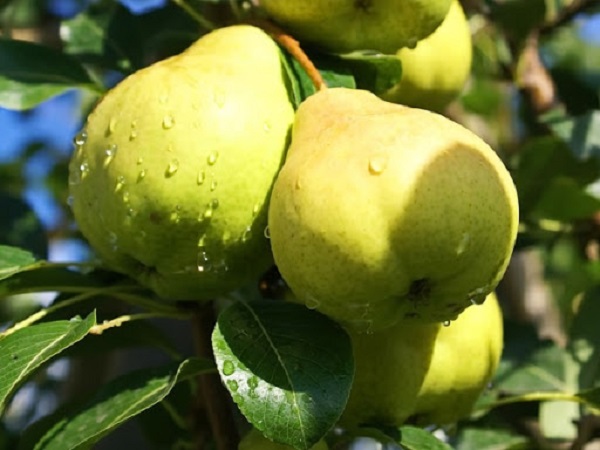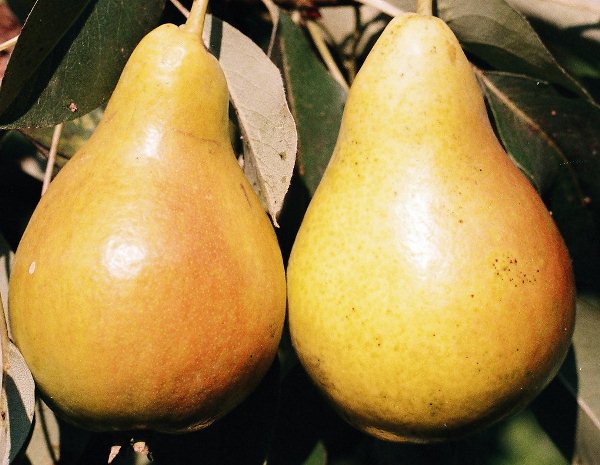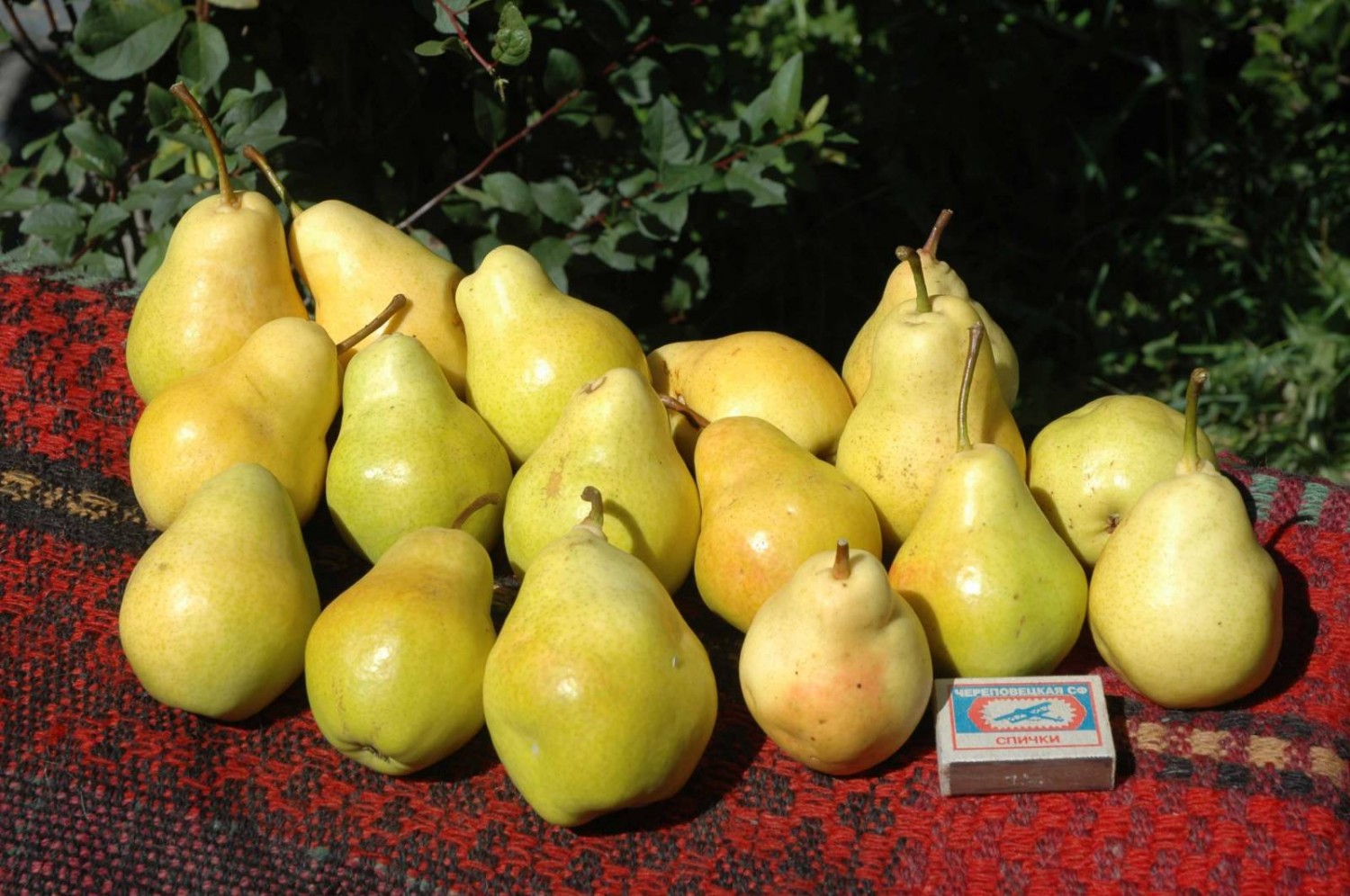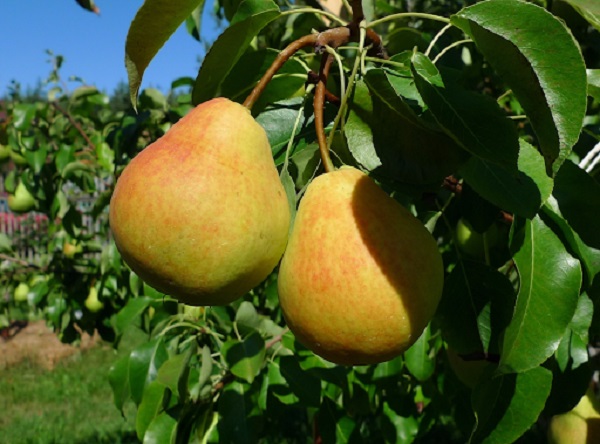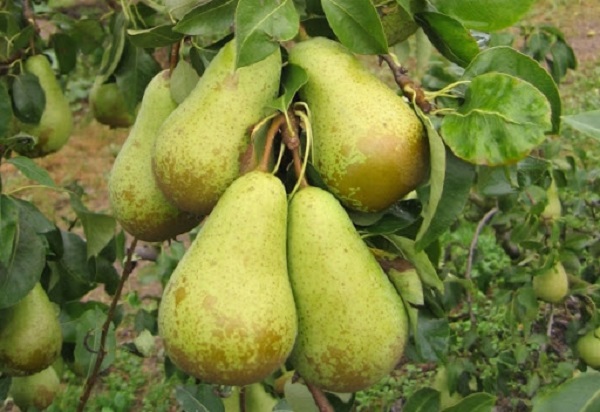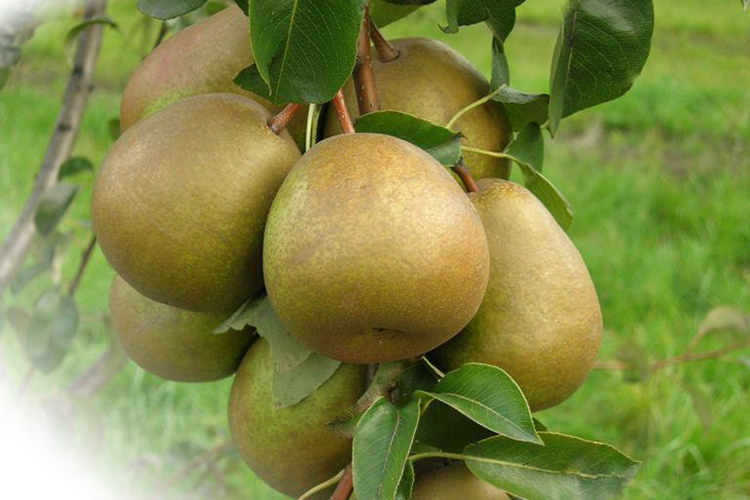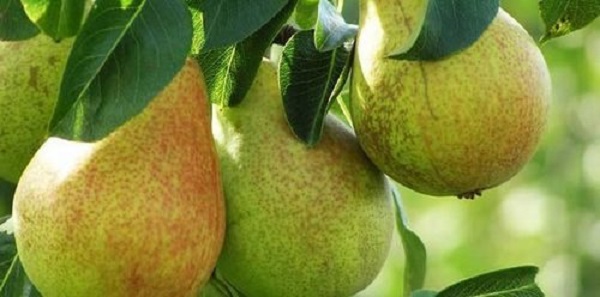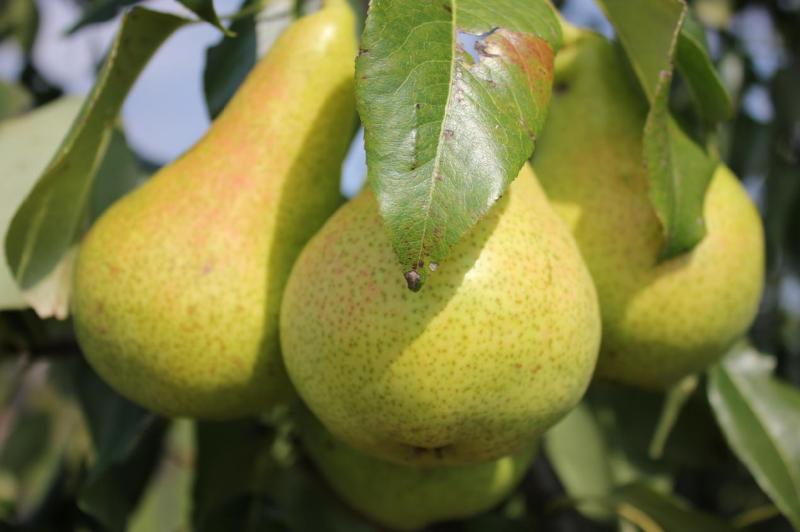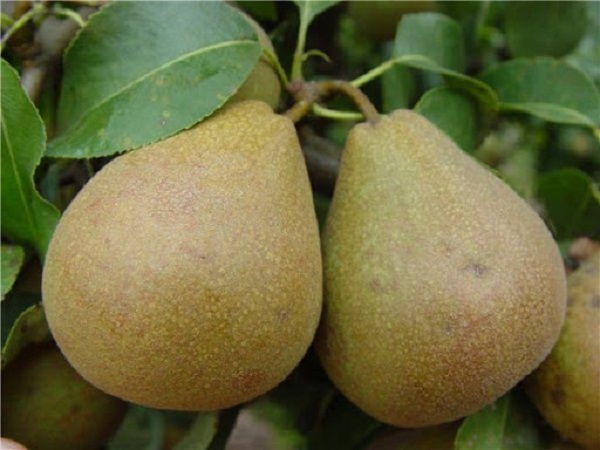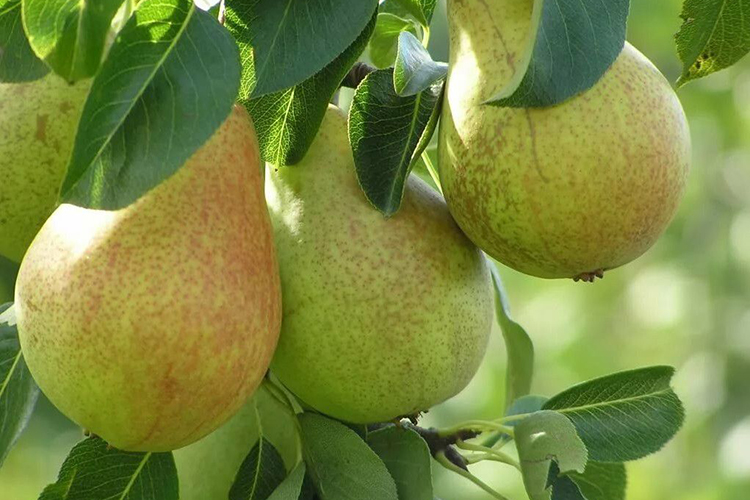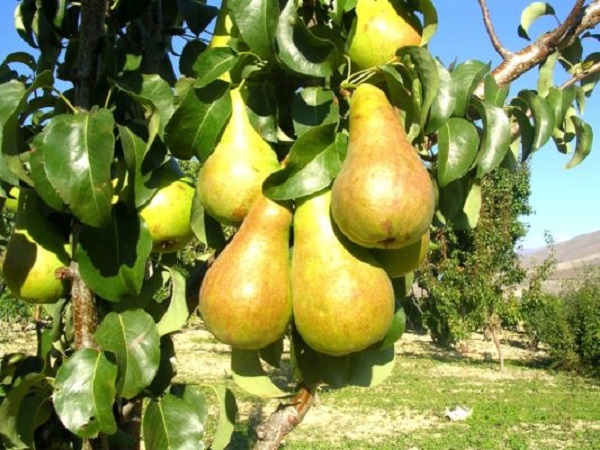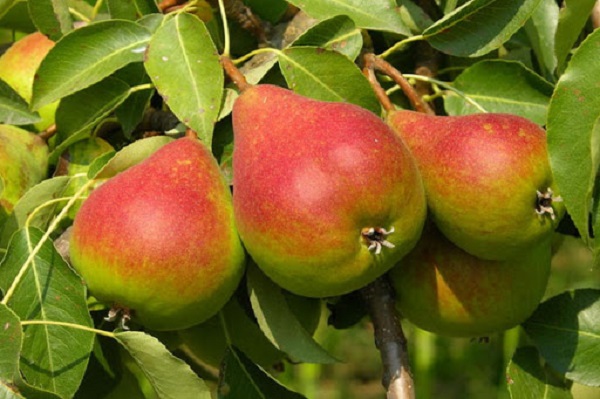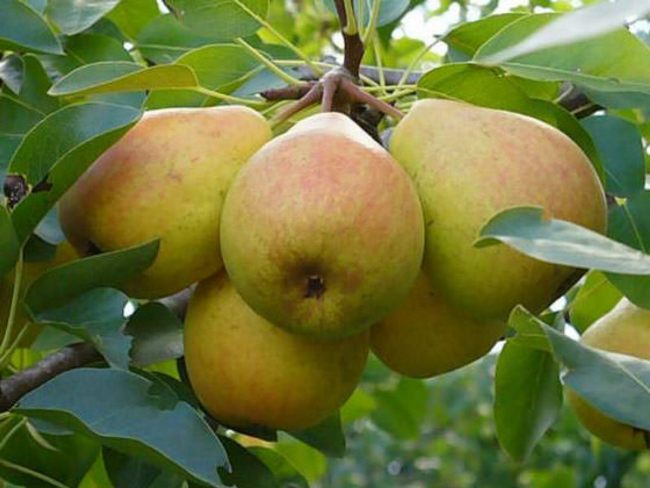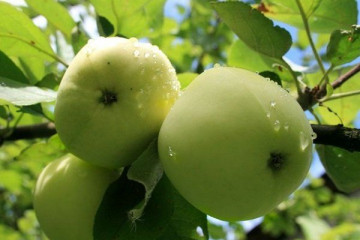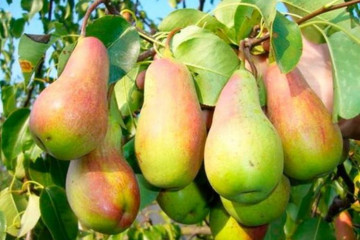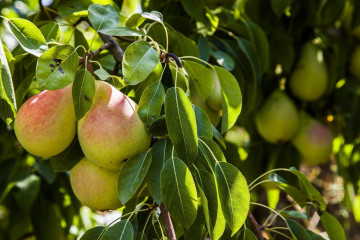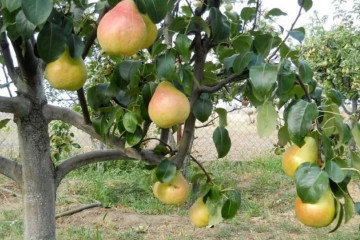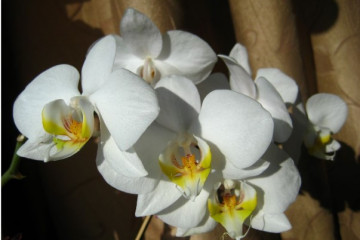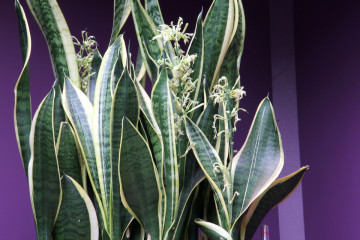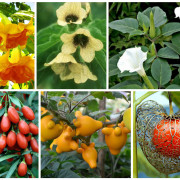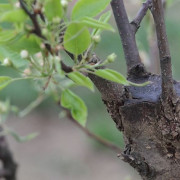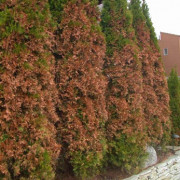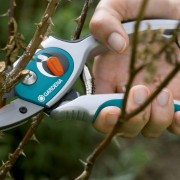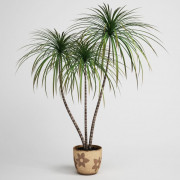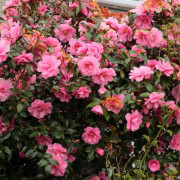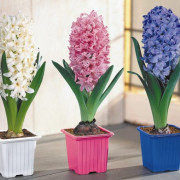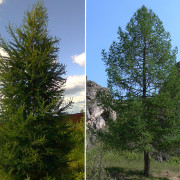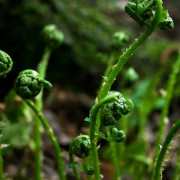Varieties of pears: the sweetest and juiciest types, their description
Content:
Many gardeners strive to grow pears. This juicy and aromatic fruit is famous for its extraordinary taste and beneficial properties. First, you need to carefully study the different varieties of pears and their names, and then grow them in their summer cottage.
The best early varieties of pears
A novice gardener tries to find out what pears are and how to care for them. There are the following types of pears:
- Summer - ripen at the end of July. So that they do not overripe and begin to rot, the fruits must be urgently collected. They are not stored for long - up to 2 weeks.
- Autumn - ripen in autumn, stored for a long time. They must be collected from the branches immediately, otherwise they will be lost.
- Winter - fruit ripening lasts from the second half of September to the end of November. Pears are stored for a very long time.
These fruits differ from each other in terms of ripening, taste and aroma, as well as the duration of storage of the harvested crop. The early summer fruits can be enjoyed as early as August.
August dew
Every year the August dew brings a bountiful harvest. This variety is very hardy and unpretentious: it tolerates frost well, and is resistant to diseases. Its fruits are famous for their pleasant taste (sweet, slightly sour) and delicate aroma. Each fruit weighs about 120 g. August dew is partly self-fertile. Next to it, you need to plant a pollinator, for example, a pear variety in Memory of Yakovlev.
In mid-August, green pears ripen on the tree, which later acquire a slightly yellowish color. If the fruit grows in direct sunlight, a slight pinkish blush appears on the skin. This is normal and not a burn. The pulp is white, rather juicy. Fruit can be stored for 2 weeks after harvest. August dew is loved for its beauty, wonderful aroma and taste.
Chizhovskaya
In mid-August, large and tasty yellow teardrop-shaped fruits ripen on a low-growing (up to 3 m) pear tree. This variety is very sensitive to temperature changes and suffers from frost and heat. Not every climate is suitable for growing it. Excess moisture causes the fruit to crack. The plant should not be watered abundantly because it is prone to fungal infection.
Lada
In August, Lada bears small (up to 100 g), but very tasty fruits. Their yellow rind shimmers with a pink tint. This frost-resistant plant is popular with gardeners in various regions, including those with harsh climates. A bountiful harvest can be harvested from a tree, but it cannot be stored for a long time.
Marble
Fruits, green with yellow overflow, weigh 150–180 g. The skin is covered with small orange or brown dots. The grainy pulp is filled with delicious and aromatic juice. The fruits are harvested in the first days of autumn and stored for 70 days. Marble differs from many other types by its high growth (up to 10 m) and a dense crown in the form of a cone.
Cathedral
Small yellow lumpy fruits weigh 110-130 g.They have the correct teardrop shape, but because of the tubercles they seem to be crooked. The smooth, oily skin gives off a slight glossy sheen. Many people love the pulp of the Cathedral pear for its delicate aroma and slightly sour taste of its granular pulp. The fruits ripen in the second half of August and can stay no longer than 10-12 days. This variety grows in any climate.
The best autumn pear varieties
The end of summer and the first half of autumn are great times for harvesting. During this period, fruits ripen on pears Autumn Yakovleva, Moskvichka, Conference, Talgar beauty.
Autumn Yakovleva
The tall (about 15 m) tree bears massive fruit. Delicious yellow pears are covered with a subtle tan. Autumn Yakovleva is susceptible to many diseases, and therefore needs good care. As a reward for his labor, the gardener will receive a bountiful harvest - up to 160 kg from one tree. Inexperienced gardeners should not undertake the cultivation of this variety. It is recommended to grow it in the Lower Volga and Central Black Earth regions.
Muscovite
The tree is 7–9 m high and has a spreading brown or brown crown. There is almost no blush on yellow fruits. Instead, the skin is covered with rust-colored spots. The fruit is very aromatic and delicious. The crop can be harvested as early as 2-3 years after planting the seedlings.
The conference
The variety has been known since the end of the 19th century. It is very popular in Europe and southern Russia. In the second half of September, you can harvest. Unusually juicy and sweet fruits weighing 130–150 g have an elongated teardrop shape and are a bit like a bottle. Their distinctive feature is their tough, rough green peel. On the sides that have been exposed to the sun, brown, reddish or rusty spots appear. Fragrant grainy pulp is rich in juice. Its color can be pinkish, creamy or yellowish, and it tastes slightly tart.
Talgar beauty
Thanks to the free pollination of the Forest Beauty pear, breeders from the Kazakh Institute of Fruit Growing received a new variety. It is common in central Russia. From mid-August to the end of September, light yellow fruits with a red tint ripen on the Talgar beauty. The fruits weigh 160 g and have a sweet and sour creamy flesh with a dense granular structure. The Talgar beauty has a good immunity to scab. The harvested crop can be stored for 1–1.5 months.
The best winter varieties of pears
Delicious fruits can be picked in late autumn and even in winter. There are many great winter pear varieties.
Olivier de Serre
The capricious and whimsical Olivier de Serre can only be grown by experienced gardeners. He needs to create the most comfortable conditions. It is especially important to regularly prune the branches, otherwise they will interfere with the growth of the fruit.
Belarusian late
An extremely hardy plant, ideal for difficult growing conditions. Despite the harsh climate and poor soil, fleshy juicy fruits ripen on it. The pulp has a pleasant sour taste.
Saratovka
An orange pear with sweet and juicy pulp has long been loved by residents of the Volga region and other warm regions. These fruits are not subject to rotting, therefore they are stored for a long time.
Miracle woman
This tree is often grown in cold regions - in the Urals and Siberia. The miracle is not afraid of frosts, diseases, or parasites. It blooms in March and bears fruit in October. The fruit weighs 180-200 g and is stored until next March.
The best sweet pear varieties
Every gardener strives to grow the tastiest pears. He has a rich selection of sweet-tasting varieties:
- Tavricheskaya;
- Thumbelina;
- Honey;
- Yeseninskaya;
- Dessert;
- Sentyabrina;
- Preserved;
- Daughter of the Messenger.
It is not easy to choose the sweetest and juiciest pear variety. Each of them is beautiful in its own way.
Varieties for planting in the gardens of the Moscow region
It is desirable to grow frost-resistant plants in the Moscow region. There are varieties of pears that tolerate this climate very well and give a rich harvest.
Elegant Efimova
The pulp of these pears is very sweet and juicy, has a yellow-green color. Hardy variety withstands cold, scab resistant. If the side of the pear has received a lot of sunlight, it will turn crimson or purple.
Vera Yellow
In summer, the fruits of this variety are greenish, but in autumn they turn orange or yellow. The pulp is grainy and odorous. An unpretentious frost-resistant variety grows quietly in the Moscow region. The fruits ripen in mid-September. The tree bears fruit for many years, but periodically the yield drops, and the fruits become small. However, after a while the tree recovers and yields a normal harvest again.
Fabulous
This pear is common in the Urals. The fruits ripen at the end of summer and are stored for 12 days. Large, yellow-green fruits of regular shape, covered with dry and dull skin. Their weight varies from 180 to 250 g. The white pulp of the Fairy Pear is famous for its juiciness and spicy taste. The consistency of the pulp is a little oily, the aroma is weak. This variety tolerates severe frosts and has excellent immunity.
Tenderness
Large and heavy Tenderness pears are almost round in shape. Their yellow skin is covered with a bright raspberry blush. The pulp is tender and juicy, with a sour-sweet taste. This variety is very productive and frost-resistant, but does not tolerate drought, so the tree must be watered regularly. The fruits ripen in early autumn. The pear is grown in the suburbs, in central Russia and in the Volga region.
Prominent or Lumpy
The self-pollinated type Vidnaya or Bugristaya is famous for its high yield and frost resistance. The ribbed fruit of a bright light green color is covered with tubercles, so the skin is rough to the touch. It weighs between 130 and 200 g. The crop can be harvested in two stages: mid-August and early September. It is grown on an industrial scale in the Moscow region.
Other varieties of pears
Pear varieties are very diverse, so you can choose any of them for growing in your garden.
Bere
The ancient type of Bere pear was developed in Europe and is popular in hot climates. Its name comes from the French word beurre - "butter". It represents a whole group of varieties that differ from each other in ripening time and appearance of the fruit. The pear became so called because of its juicy pulp, which literally melts in the mouth. Fruits can be yellow, orange, pinkish, greenish. Some of them have a blush on their smooth skin. Bere is a heat-loving and whimsical plant.
Skorospelka
A yellow or green pear with pale skin ripens in early July. On the branches of Skorospelka grow large, heavy fruits weighing about 180 g. Honey aroma and sour taste are the distinctive features of the variety. It has a very high yield and is drought tolerant, so the tree can be grown in arid regions.
Bere Moskovskaya
The ruddy yellow pears of this variety are irregular in shape and covered with small tubercles. Delicious buttery pulp combines acidity and sweetness. Bere Moskovskaya tolerates frosts, does not get sick with scab or rot.
Simply Maria
This pear tree bears large and beautiful fruits weighing 180-200 g. At the beginning of ripening, the fruit is greenish-yellow in color. Fully ripe pears turn bright yellow, covered with a pink blush. Their skin is very smooth, without roughness. Juicy yellowish flesh resembles butter in consistency. The sweet and aromatic fruits ripen in November, and up to 35–40 kg of fruit can be harvested from one tree.You can remove slightly unripe fruits from the branches and store them in a cool place until January. It's just that Maria is a type that is resistant to bacterial and fungal infections, to pests and frost.
Clapp's Favorite
The summer variety, originally from America, bears excellent fruit: one tree can produce up to 250-300 kg of fruit per year. Klapp's favorite is a thermophilic plant that grows best in the southern regions - in the Astrakhan region and Kalmykia, in Moldova, Ukraine and the North Caucasus.
At the end of July and in the first days of August, yellow, reddish fruits ripen on the tree, sometimes even a purple pear is found. This color gives the fruit a bright blush. They are similar in shape to an egg: rounded, but elongated. The fruit can weigh 180–230 g. The fruit can be stored for 10–15 days. Pet Klapp can be sick with scab, so it needs preventive treatments with special preparations.
Pass-Krasan
The variety was bred in France and is now common in regions with a mild southern climate. In October, spherical green or greenish-yellow, and sometimes brownish fruits weighing 180 g ripen on the tree. Sometimes their skin is orange, on sunny sides it becomes golden. The fragrant, creamy pulp is filled with juice, sourish on the palate. During heat and drought, fruits become bitter and tart.
Bryansk beauty
It grows in central Russia and in the regions of the Black Earth Region. The shape of these pears is very variable: it can be regular or bumpy. The yellow fruits with a dark red blush weigh from 150–250 to 450 g. The juicy, oily, creamy pulp has a floral aroma and a pleasant taste. The crop is harvested in the first half of September, it can lie up to 15 days.
Beauty Chernenko
It is grown in temperate climates. Large, lumpy fruits are slightly elongated and greenish-yellow in color with a reddish-brown blush. The white juicy pulp has a subtle aroma and taste. The beauty Chernenko is hardy and disease-resistant.
Bashkir summer
These pears are very small - weighing 70–80 g. They have a yellow rough peel with small green dots. The white flesh has a spicy flavor. This variety is resistant to scab, easily tolerates both frost and drought.
In memory of Zhegalov
Small pears weighing 120–140 g exude a charming aroma. The thin green skin is sometimes blush. The yellow pulp is full of juice. The crop is harvested in the last days of September and stored for 4 months.
Duchess
A very famous and popular autumn variety. The pear tree was brought from the south of France, so it loves heat and does not tolerate cold weather, it cannot be planted in the northern regions. The plant is unpretentious to care for, but needs regular pruning and fertilization.
Veles
From June to August, bright green fruits ripen on this pear, which later turn orange or red. Each of them weighs 150-200 g.
Allegro
Resistant to disease and cold, this unpretentious variety gives a good harvest. The branches ripen large fruits weighing up to 200 g.
Kondratyevka
Unpretentious and frost-resistant Kondratyevka can be grown in the country. The crop must be harvested in the fall. A green pear weighs 120-200 g and can be stored until January. The oily pulp of the fruit is famous for its sweet taste and delicate smell.
Bessemyanka
Pears are greenish-yellow with a pink blush and are similar in shape to apples. This summer variety is famous for its juicy pulp and withstands frost well, but is sensitive to scab and does not last long.
Rogneda
This is the highest yielding variety. It is easy to care for, so it can be grown by novice gardeners. Rogneda is unpretentious, resistant to pests and bacterial infections, it easily tolerates even bad conditions, for example, temperature drops. At the end of summer and in September, light yellow pears with red sides and nutmeg flavor ripen on the tree. You can pick the fruit first and let it sit for a while to ripen.Delicious and juicy fruits are stored for a long time (up to 3 months).
Whiteleaf
In mid-August, the yellow fruits of White-leafed with juicy and sweet pulp ripen. Pears exude a pleasant aromatic aroma. The tree needs frequent and abundant watering. It is a very hardy variety: it is resistant to parasites and fungal infections. Ripe fruits can not only be eaten fresh, but also canned, cook compote and jam from them, and make juice.
Otradnenskaya
This autumn variety brings a bountiful harvest - up to 200 kg per tree. It is frost resistant, so it can be grown in almost any climate. Round greenish-red fruits shimmer with a silvery tint. Sour in taste, they are odorless. Their pulp is not juicy.
Summer residents who dream of growing a fruit orchard will find it useful to find out which pears are suitable for a particular region and how to care for them. Trees are susceptible to diseases such as bacterial cancer, so you need to monitor their health and treat them in time. Pears can be used to make compotes, juices, mashed potatoes for a small child, add to sauces and rolls. This fruit is low in calories, so it can be eaten with excess weight and diabetes.
